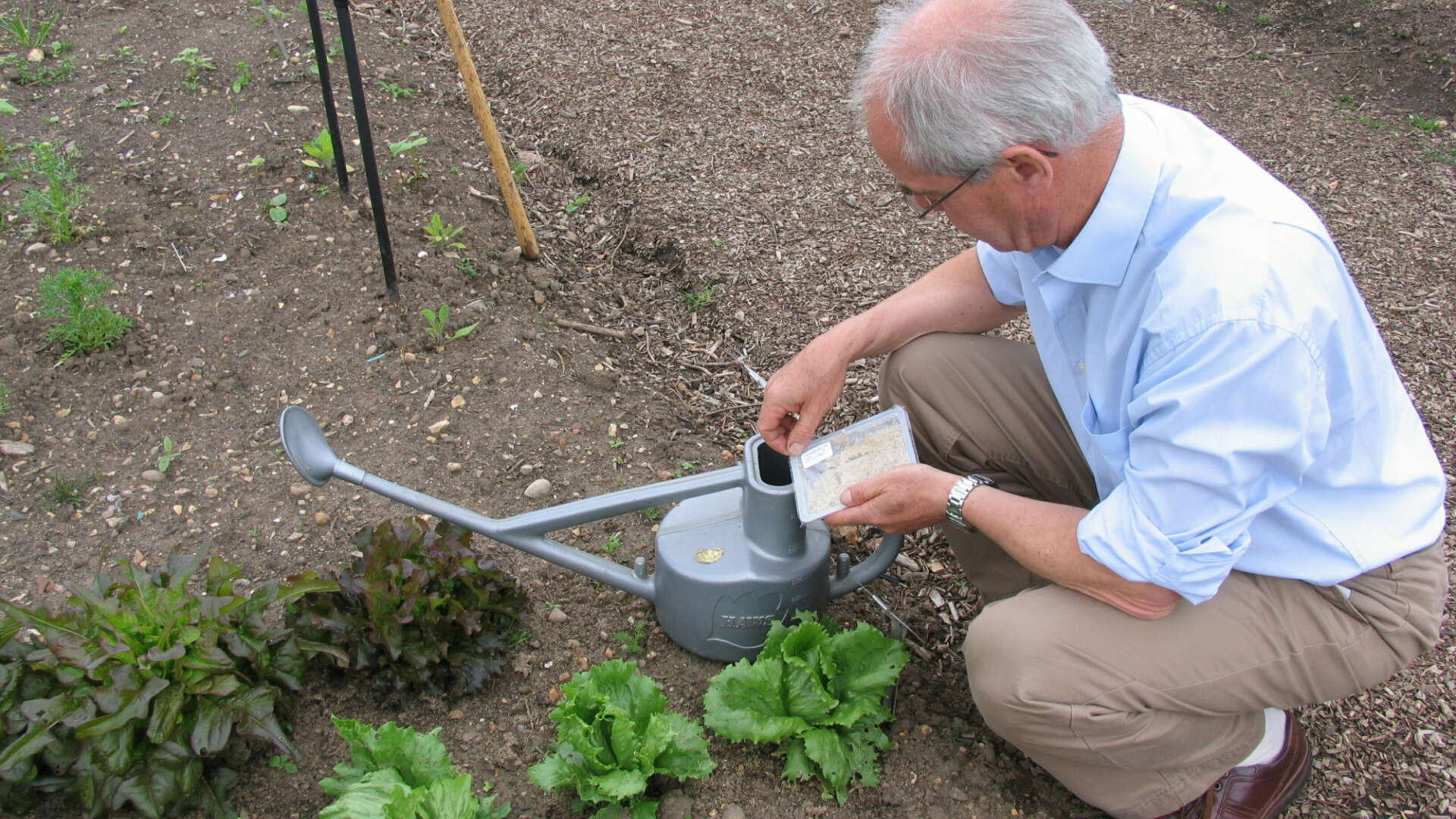Pests and diseases
Nematodes

What are they?
Nematodes are microscopic creatures, that act as parasites on other insects. They release bacteria into the host’s body to kill them. The nematode then eats the host.
For the organic grower, this is a biological - not chemical - pest control. Unlike a chemical spray, which may drift off target, nematodes are specific to the host pest, so that other wildlife is not affected.
You can buy nematodes online. However, they aren't necessarily cheap and you do need to follow the very precise instructions on how to use them.
How to use nematodes
It is important to choose the correct nematode for the right type of pest. And to use them in the right conditions.
- The soil needs to be above 5C (and will remain so, even at night).
- The pests or their larvae need to be active.
- Nematodes should be applied when light levels are low. They are light-sensitive, so apply them in the very early morning or at dusk.
Where do I get them from?
You can buy them online. We recommend the range from the Organic Gardening Catalogue.
Instructions on use
They arrive in a sachet suspended in a paste. It is best to use them straight away, however, you can store them in the fridge for up to a few weeks (do not freeze).
- Mix the paste with a small amount of water to make a slurry, before adding the rest of the water. Stir the solution once again before applying it.
- If you use a watering can use a coarse rose, to make sure that the nematodes don’t get stuck in the holes.
- Keep the soil moist and warm for at least a few weeks, to make sure that the nematodes remain active.
- You may have to make repeat applications - especially when treating slugs, for instance.
How long does it take to see results?
Usually 3-7 days, with the maximum effect occurring over 2-4 weeks.
Nematodes disintegrate the pests from the inside out, so you will not see dead insect bodies as you would with a chemical knockdown.
How often should nematodes be applied?
Nematodes are recommended for use whenever larvae or grubs are present. Generally, this is during spring and autumn.
Because larvae feed on plant roots, beneath the soil surface, severe damage can be done before realizing there is a problem. Look for signs of an adult insect, such as leaf-notching.
If adult insects are present, their eggs will be hatching soon. Again, you may have to make repeat applications.
The following is a list of pests, and the best nematodes to deal with them:
Ants. Nematode Steinernema will ambush the ants when passing. As the bacteria poisons them, it will weaken the colony, eventually killing off the queen who has too few workers to feed her. It is best used between April to September by drenching the nests.
Chafer grubs. If your lawn has yellow patches and looks like it has been dug up, chances are you have chafer grubs. The damage comes from the birds, foxes and badgers who dig for these tasty morsels. The grubs can be controlled by the nematode Heterorhabitis bacteriophora, one of the oldest known and best of the insect parasitic nematodes. It is best to deal with the young grubs in August and early September.
Fruit flies, carrot root fly, onion fly, gooseberry sawfly and codling moth. All these pests can be treated with a generic mix called Nemasys Natural Fruit and Veg Protection Pest Control. You can use it as a general treatment after planting out and when the soil has warmed up, or to target specific pests when you see them, such as gooseberry sawfly caterpillars. These (and other caterpillars) need to have direct contact with the spray while they are on the leaves.
You may also like

Leather jackets. These are the larvae of the crane fly or daddy longlegs, and they attack the roots of your grass lawn. They can be controlled by the nematodes Steinernema feltiae. The best time to put them to work is in the autumn, when the adult daddy-long-legs are laying and the soil is warm.
Slugs. The grandly named Phasmarhabditis hermaphrodita is another weapon in the arsenal against slugs. The nematodes can modify the slug's behaviour so that it remains below the ground surface before death. After eating the cadaver, the nematodes produce another generation, which move off through the soil in search of new slug hosts. Slug nematodes are killed off in soil after 6 weeks by a predatory fungus, so repeated applications don't work : and unfortunately, they don't live long in the soil, which is why you need to be very time accurate in applying- just when shoots are emerging or potato tubers forming for example.
Vine weevils. Steinernema kraussei seeks out the Vine Weevil larvae. Unusually, this nematode is active at soil temperatures as low as 5C, which means that applications can start in March in Southern areas. This will give much greater control of larvae when they are present, which is either March to May, or from July to October.
Join Garden Organic!
By becoming a Garden Organic member you can join thousands of people who are already leading the movement for an organic and sustainable future for us all. And get great member benefits!
Join today